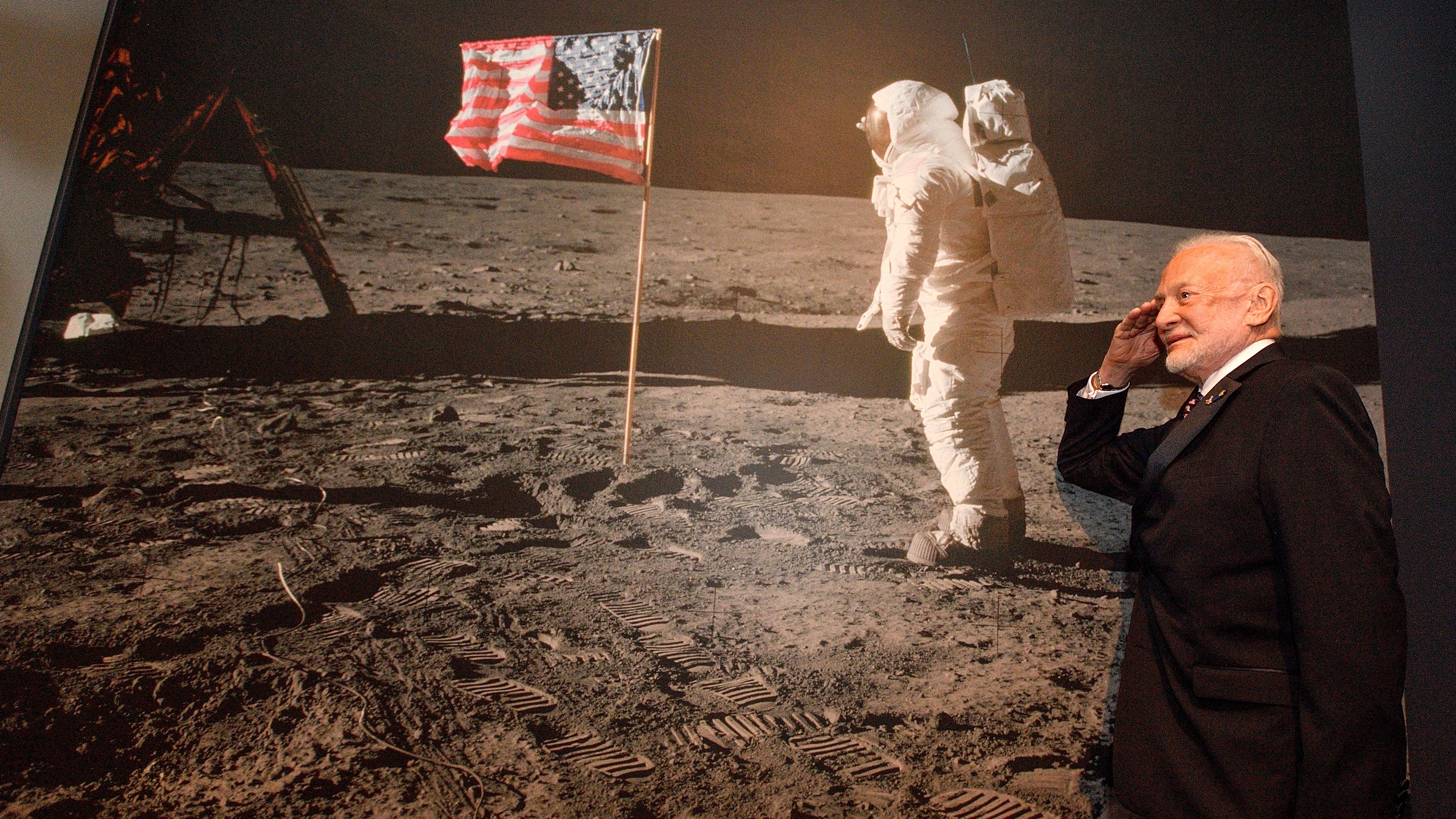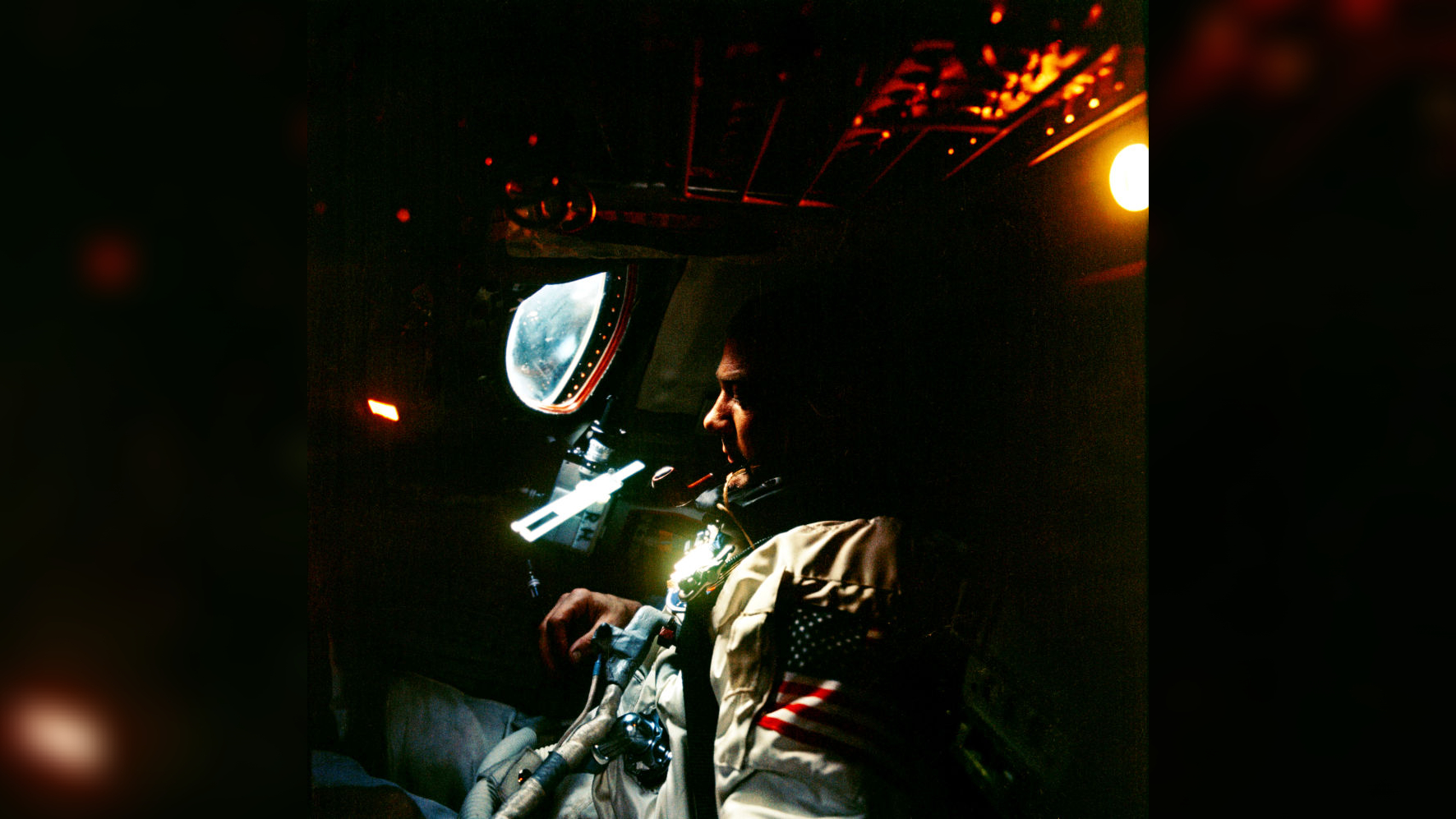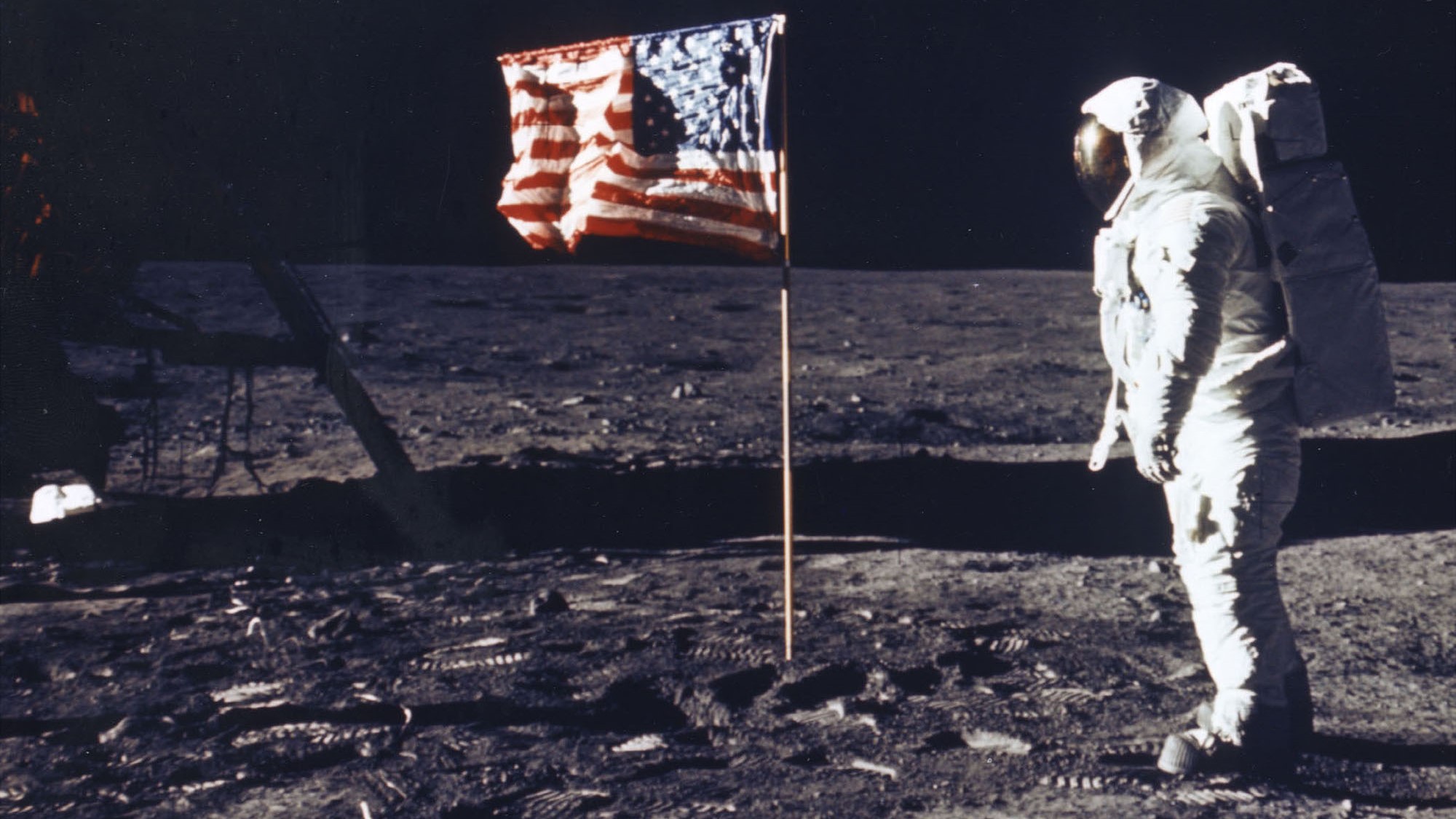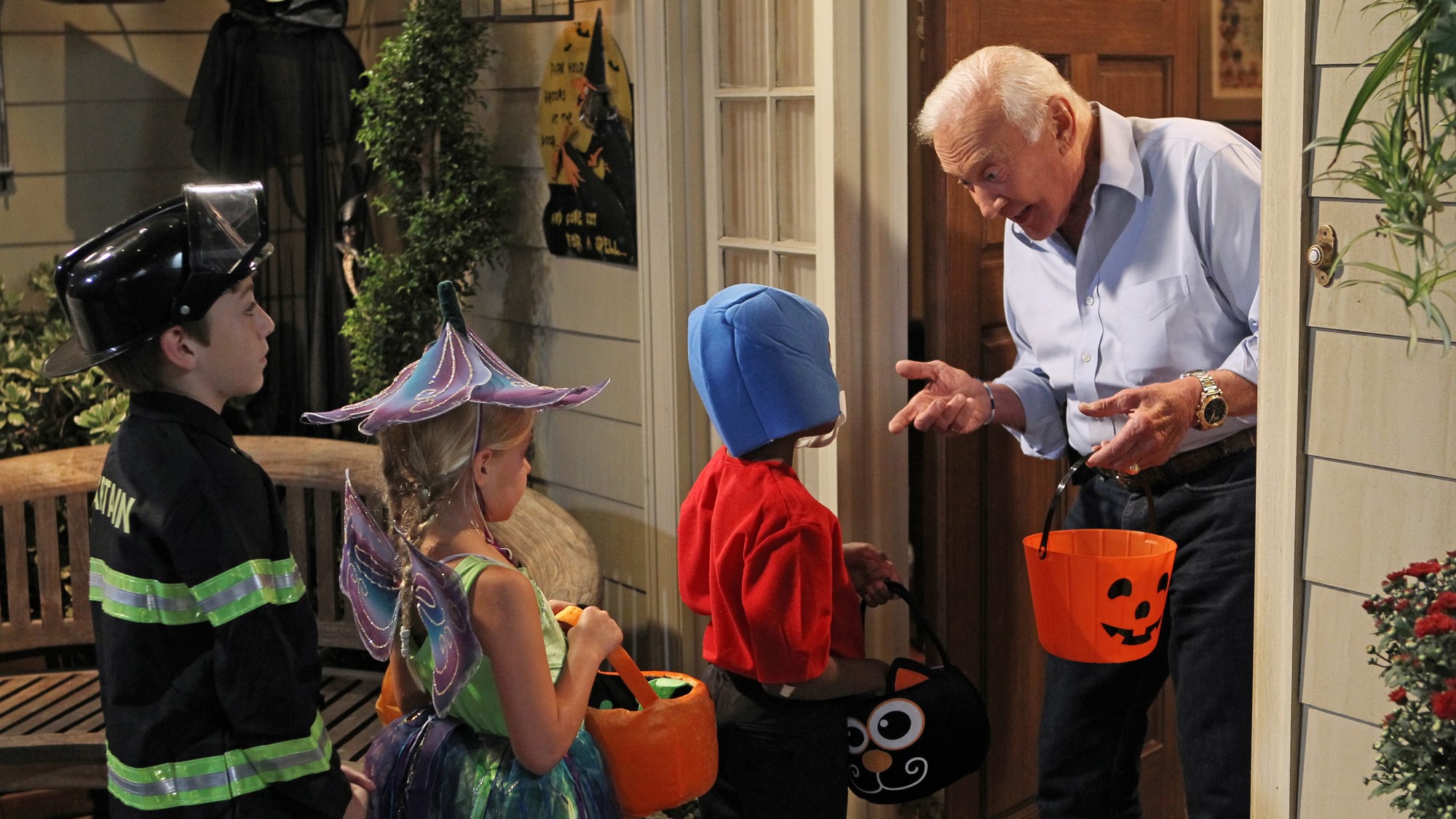Buzz Aldrin: The second man on the moon
He may have been second on the moon, but when it comes to historic impact and cultural significance, Buzz Aldrin is second to none.

Buzz Aldrin is a former NASA astronaut who is famous for being part of the three-man crew that voyaged to the moon on the Apollo 11 mission with Neil Armstrong and Michael Collins in 1969.
Aldrin made history when he became the second person, after Armstrong, to walk on the surface of the moon.
Related: Missions to the moon: Past, present and future
Early years
Born Edwin Eugene Aldrin Jr. on Jan. 20, 1930, in Montclair, New Jersey, Aldrin is the son of Edwin Eugene Aldrin, a U.S. Air Force colonel, and Marion Moon, the daughter of an Army chaplain. According to History.com, Aldrin's nickname, "Buzz," goes back to his childhood, when his little sister struggled to say "brother," instead calling him "Buzzer." Aldrin legally adopted the name in 1988.
In 1947, Aldrin graduated from Montclair High School, in Montclair, New Jersey, where he had been a consistent A student and played football in the undefeated 1946 squad. He received a Bachelor of Science degree in 1951 from the U.S. Military Academy West Point in New York, graduating third in his class.
Aldrin's father wanted his son to go to a multiengine flight school so he could take charge of his own flight crew, but the future Apollo 11 astronaut had other ideas, according to History.com: He wanted to become a fighter pilot. Aldrin joined the U.S. Air Force in 1951. Scoring near the top of his class, he began fighter training later that year.
During his military career, Aldrin flew 66 combat missions over Korea in F-86 Sabre jets, fighting the invasion of communist forces from North Korea into South Korea, according to Britannica. After a cease-fire was declared between North and South Korea in July 1953, and following a brief stint in West Germany, Aldrin returned to the United States to continue his education at the Massachusetts Institute of Technology, with the intention of becoming a test pilot. Ten years later, Aldrin received a doctorate of science in astronautics from MIT. His 1963 thesis, titled "Guidance for Manned Orbital Rendezvous," hinted at his future endeavors. According to his NASA biography, Aldrin has honorary degrees from six colleges and universities.
Starting with NASA: Before Apollo 11

In 1963, NASA selected Aldrin as part of the third group of men to attempt spaceflight. According to History.com, Aldrin's role was to take charge of the development of spacecraft docking and rendezvous techniques.
Aldrin also took part in underwater training tests aimed at simulating the conditions in zero-gravity flights. This testing paid off when, in November 1966, Aldrin joined astronaut Jim Lovell on Gemini 12, the 10th and final crewed flight of the Gemini program.
During the four-day flight, Aldrin did three spacewalks totaling 5.5 hours — a record at the time. The spacewalks aimed to demonstrate that humans can function in the vacuum of space. After the onboard Gemini radar failed, Aldrin put his docking and rendezvous skills to good use, manually recalculating all of the docking maneuvers for the flight.
Following the Gemini 12 mission, Aldrin was assigned to the backup crew of Apollo 8 alongside Armstrong. Little did the two astronauts know that just three years later, they would be making history rather than playing a backup role.
Apollo 11: To the moon and back

The main objective of the Apollo 11 mission, laid out by President John F. Kennedy on May 25, 1961, was to perform a crewed lunar landing and return to Earth. Secondary objectives included scientific exploration by the lunar module and the deployment of a television camera to transmit signals to Earth.
The Apollo 11 crew comprised Armstrong (commander of the mission), Aldrin (lunar module pilot) and Michael Collins (command module pilot). Launched from Cape Kennedy (now Cape Canaveral) in Florida on July 16, 1969, the spacecraft reached an initial Earth orbit of 114 by 116 miles (183 by 187 kilometers) and then a translunar orbit 2 hours, 44 minutes after launch. Three days after launch, the crew reached lunar orbit, and the following day, Armstrong and Aldrin entered the Apollo Lunar Module Eagle and began their descent to the lunar surface.
Eagle landed at the moon's Sea of Tranquility at 4:17 p.m. EDT (2017 GMT) on July 20, 1969. At 10:56 p.m. EDT (0256 GMT on July 21), with an estimated 650 million people watching on TV across the globe, Armstrong became the first human to set foot on the moon, proclaiming, "That's one small step for a man, one giant leap for mankind."
Aldrin joined him moments later and described the vista of the moon as one of "magnificent desolation." The duo then spent 2.5 hours exploring the moon and collecting lunar samples. Aldrin and Armstrong remained on the lunar surface for a total of 21 hours, 36 minutes, which included a seven-hour rest period.
As Aldrin and his fellow astronaut departed the moon to rendezvous with Collins and the Columbia command module, they left behind an American flag, a patch honoring the fallen Apollo 1 crew and a plaque on one of Eagle's legs reading, "Here men from the planet Earth first set foot upon the moon. July 1969 A.D. We came in peace for all mankind."
The three-person Apollo crew safely splashed down in the Pacific Ocean off Hawaii on July 24, 1969.
Buzz Aldrin after Apollo
Following the safe return to Earth, Aldrin was awarded the Presidential Medal of Freedom and embarked on a 45-day international goodwill tour, according to History.com. In 1971, after 21 years, Aldrin retired from active service. He returned to the Air Force in a managerial role.
In his memoir, titled "Magnificent Desolation: The Long Journey Home from the Moon" (Bloomsbury, 2009), Aldrin compares his state of mind after returning to Earth to his response to viewing the moon's landscape for the first time. He was unable to describe the magnitude of the experience, leading to depression and alcohol dependence.
"I wanted to resume my duties, but there were no duties to resume," Aldrin said in the book. "There was no goal, no sense of calling, no project worth pouring myself into."
Encouraged by then-girlfriend Beverly Van Zile, Aldrin checked into an alcohol rehabilitation center in August 1975. The 28-day stint was enough to make Aldrin realize the depth of his issues but did not prevent further relapses, according to Biography.com. Aldrin would give up alcohol for good in October 1978.
In 1998, Aldrin founded the ShareSpace Foundation, now called the Aldrin Family Foundation, a nonprofit organization dedicated to promoting the expansion of crewed space exploration.
Aldrin's personal life
Aldrin has been married four times. His first wife was Joan Archer, who was born in Paterson, New Jersey, on Dec. 5, 1930, as the only child of oil executive Michael Archer and C. Evelyn Cleminshaw. Aldrin and Archer met in the early 1950s and were married on Dec. 29, 1954. They had three children: James, Janice and Andrew. Aldrin and Archer filed for divorce five years after the Apollo 11 mission, in 1974. Archer was frank throughout her life about the pressures she faced as the wife of an astronaut and national hero. She died on July 22, 2015.
Aldrin's second marriage was to Van Zile, whom he married on Dec. 31, 1975. The two called off the marriage after three years. Van Zile died in April 2004.
On Feb. 14, 1988, Aldrin married Lois Driggs Cannon, but the pair divorced in December 2012. Driggs Cannon died in July 2018.
Aldrin has one grandson, Jeffrey Schuss (born to his daughter Janice), three great-grandsons and one great-granddaughter.
Who is the new Mrs. Aldrin?
On Jan. 21, 2023, Aldrin announced on Twitter that the previous day, his 93rd birthday, he had married for the fourth time — to Anca Faur during a small private ceremony in Los Angeles. On the same day, Aldrin was also honored by Living Legends of Aviation.
Faur presently serves as the executive vice president at Buzz Aldrin's company, Buzz Aldrin Ventures. She has a doctorate in chemical engineering from the University of Pittsburgh.
Buzz in the media: Cameos and guest appearances

Befitting a cultural icon and a man with a star on the Hollywood Walk of Fame, Aldrin has made a number of appearances and cameos in movies and television shows.
After appearing in episodes of the 1980s shows "The Fall Guy" and "Punky Brewster," Aldrin made an unforgettable cameo in 'The Simpsons."In the fifth-season episode "Deep Space Homer," in 1994, the Simpson patriarch is selected to become an ordinary man journeying to space with Aldrin on the spacecraft Corvair. This leads to a crisis involving a doughnut and an ant farm, in what is widely regarded as one of the best episodes of the long-running animated sitcom.
Aldrin also appeared as himself in a 2011 episode of the animated sci-fi sitcom "Futurama" called "Cold Warriors."
In non-animated form, Aldrin also made a cameo in a 2012 episode of "The Big Bang Theory." In the season 6 episode, called "The Holographic Excitation," Aldrin pokes fun at himself and appears in a YouTube clip showing him handing Halloween candy to children, mentioning his journey to the moon at every opportunity.
Video clips might be a sore subject for the second man on the moon, however. In a widely circulated clip from September 2002, the then-72-year-old Aldrin is seen landing a punch on conspiracy theorist Bart Sibrel. Sibrel believed the moon landings were staged and confronted Aldrin in a rude and insulting way. After Aldrin repeatedly asks Sibrel to leave, Sibrel calls the astronaut "a coward and a liar and a thief."
Aldrin doesn't just stand up to conspiracy theorists; in the 2011 flick "Transformers: Dark of the Moon," Aldrin aids fearless Autobot leader Optimus Prime in taking on Megatron and his ruthless Decepticons.
Arguably, Aldrin's most significant contribution to modern pop culture is in toy form: Pixar named its spaceman action figure Buzz Lightyear, from the "Toy Story" franchise, after him, and the character even starred in his own spinoff, "Lightyear," a generation later. In that way, Aldrin's legacy lives on not only in science museums and history textbooks but also in the toy boxes and imaginations of millions of children.
Additional resources
Hear Buzz Aldrin tell the full story of the first moon landing to Science Museum. See NASA's footage from that historic event. Explore Buzz Aldrins's various cameo appearances in more detail with his IMDB profile.
Bibliography
Apollo 11 Mission Overview, NASA, [Accessed 07/10/23], [https://www.nasa.gov/mission_pages/apollo/missions/apollo11.html]
Buzz Aldrin, Britannica, [Accessed 07/10/23], [https://www.britannica.com/biography/Buzz-Aldrin]
J. Sharp Over the moon! Buzz Aldrin announces marriage to 'long-time love' on 93rd birthday, Sky News, [https://news.sky.com/story/over-the-moon-buzz-aldrin-announces-marriage-to-long-time-love-on-93rd-birthday-12791628.]
Who Has Walked on the Moon? NASA, [Accessed 07/10/23], [https://solarsystem.nasa.gov/news/890/who-has-walked-on-the-moon/]
Buzz Aldrin, History.com, [Accessed 07/10/23], [https://www.history.com/topics/space-exploration/buzz-aldrin]
Join our Space Forums to keep talking space on the latest missions, night sky and more! And if you have a news tip, correction or comment, let us know at: community@space.com.
Get the Space.com Newsletter
Breaking space news, the latest updates on rocket launches, skywatching events and more!

Robert Lea is a science journalist in the U.K. whose articles have been published in Physics World, New Scientist, Astronomy Magazine, All About Space, Newsweek and ZME Science. He also writes about science communication for Elsevier and the European Journal of Physics. Rob holds a bachelor of science degree in physics and astronomy from the U.K.’s Open University. Follow him on Twitter @sciencef1rst.










